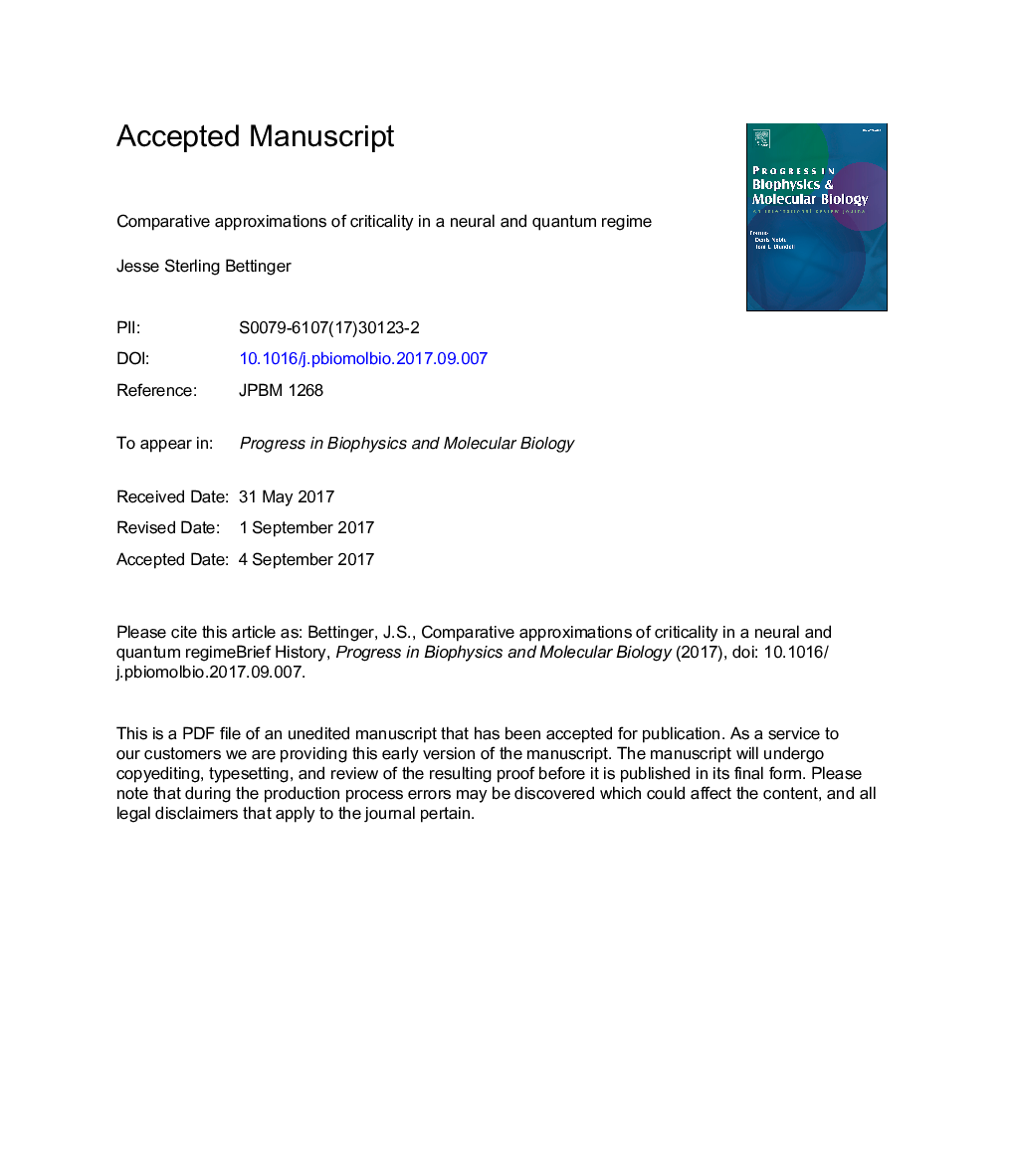| Article ID | Journal | Published Year | Pages | File Type |
|---|---|---|---|---|
| 8400696 | Progress in Biophysics and Molecular Biology | 2017 | 44 Pages |
Abstract
Under a variety of conditions, stochastic and non-linear systems with many degrees of freedom tend to evolve towards complexity and criticality. Over the last decades, a steady proliferation of models re: far-from-equilibrium thermodynamics of metastable, many-valued systems arose, serving as attributes of a 'critical' attractor landscape. Building off recent data citing trademark aspects of criticality in the brain-including: power-laws, scale-free (1/f) behavior (scale invariance, or scale independence), critical slowing, and avalanches-it has been conjectured that operating at criticality entails functional advantages such as: optimized neural computation and information processing; boosted memory; large dynamical ranges; long-range communication; and an increased ability to react to highly diverse stimuli. In short, critical dynamics provide a necessary condition for neurobiologically significant elements of brain dynamics. Theoretical predictions have been verified in specific models such as Boolean networks, liquid state machines, and neural networks. These findings inspired the neural criticality hypothesis, proposing that the brain operates in a critical state because the associated optimal computational capabilities provide an evolutionarily advantage. This paper develops in three parts: after developing the critical landscape, we will then shift gears to rediscover another inroad to criticality via stochastic quantum field theory and dissipative dynamics. The existence of these two approaches deserves some consideration, given both neural and quantum criticality hypotheses propose specific mechanisms that leverage the same phenomena. This suggests that understanding the quantum approach could help to shed light on brain-based modeling. In the third part, we will turn to Whitehead's actual entities and modes of perception in order to demonstrate a concomitant logic underwriting both models. In the discussion, I briefly motivate a reading of criticality and its properties as responsive to the characterization of tenets from Eastern wisdom traditions.
Keywords
Related Topics
Life Sciences
Biochemistry, Genetics and Molecular Biology
Biophysics
Authors
Jesse Sterling Bettinger,
